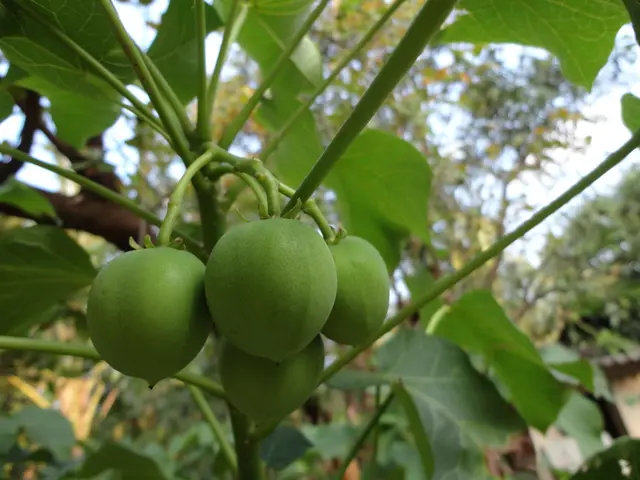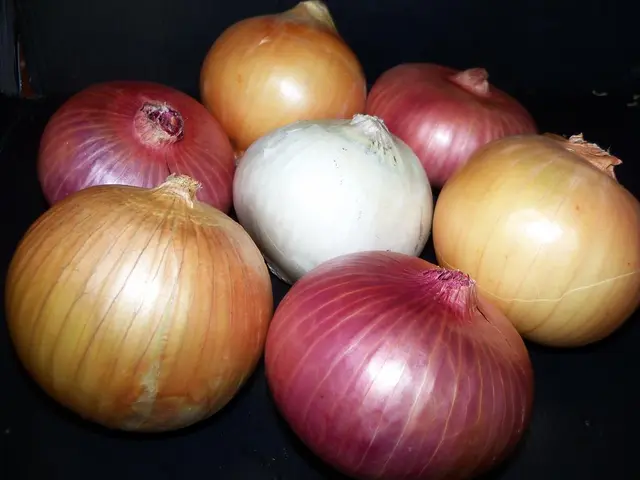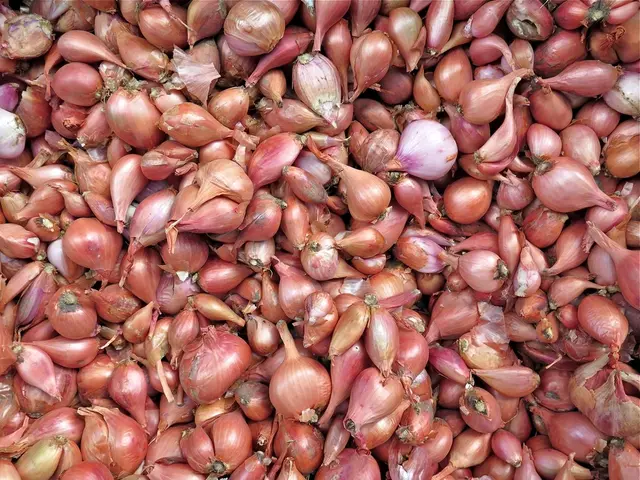Garden Transformations with Orange Peels: 4 Effective Uses
In an eco-friendly approach to gardening, orange peels have emerged as a versatile and sustainable solution for nourishing and protecting acid-loving plants. Rich in essential nutrients and natural pest repellents, orange peels offer a chemical-free alternative to traditional gardening methods.
As a natural fertilizer, orange peels are a treasure trove of potassium and phosphorus, nutrients that support new growth, flowering, and drought tolerance. Burying small pieces of orange peel around acid-loving plants like azaleas, camellias, rhododendrons, hydrangeas, and blueberries can enrich the soil and improve water retention. Alternatively, incorporating orange peels into a homemade compost bin can create nutrient-rich compost to be mixed later into your garden soil. However, it's important to note that orange peels should not be added to vermicompost, as worms are not fond of the acidity and waxy texture of citrus peels.
For a slower nutrient release, dry and grind the peels into a powder that can be sprinkled over the soil near your plants. This method ensures a steady supply of essential nutrients over an extended period.
In addition to their fertilizing properties, orange peels also serve as an effective pest deterrent. By boiling orange peels in water and letting the liquid cool, you can create a natural insect repellent. Spraying this solution on leaves and stems can help repel insects. Another method involves crushing dried orange peels into powder and scattering it around the base of plants. The oils in orange peels disrupt insect pheromones, confusing and repelling them, particularly ants.
Using orange peels in these ways not only nourishes acid-loving plants but also provides an organic way to protect them from pests without harsh chemicals. Whether it's through homemade compost, powdered fertilizer, pest sprays, or barrier methods, orange peels offer a cost-effective and eco-friendly solution for maintaining a healthy, pest-free garden.
References: [1] "Orange Peels as Fertilizer and Pest Deterrent for Acid-Loving Plants." Organic Gardening, 15 Mar. 2021, www.organicgardening.com/learn/orange-peels-fertilizer-pest-deterrent. [2] "The Benefits of Using Orange Peels in Your Garden." Eco Warrior Princess, 25 Mar. 2020, ecowarriorprincess.com/benefits-using-orange-peels-garden/. [3] "10 Surprising Ways to Use Orange Peels in Your Garden." The Spruce, 27 Mar. 2020, www.thespruce.com/ways-to-use-orange-peels-in-your-garden-3038483. [4] "Orange Peel Garden Uses: 7 Ways to Make Your Garden Grow." Mother Earth Living, 10 Feb. 2021, www.motherearthliving.com/gardening/orange-peel-garden-uses-zmaz1002zmaz.aspx.
Burying orange peel pieces around home-and-garden plants like azaleas, camellias, rhododendrons, hydrangeas, and blueberries enriches the soil, promoting new growth, flowering, and drought tolerance. Additionally, dry and ground orange peel powder can be used as a slow-release fertilizer for home-and-garden plants to provide a steady supply of essential nutrients over an extended period.








